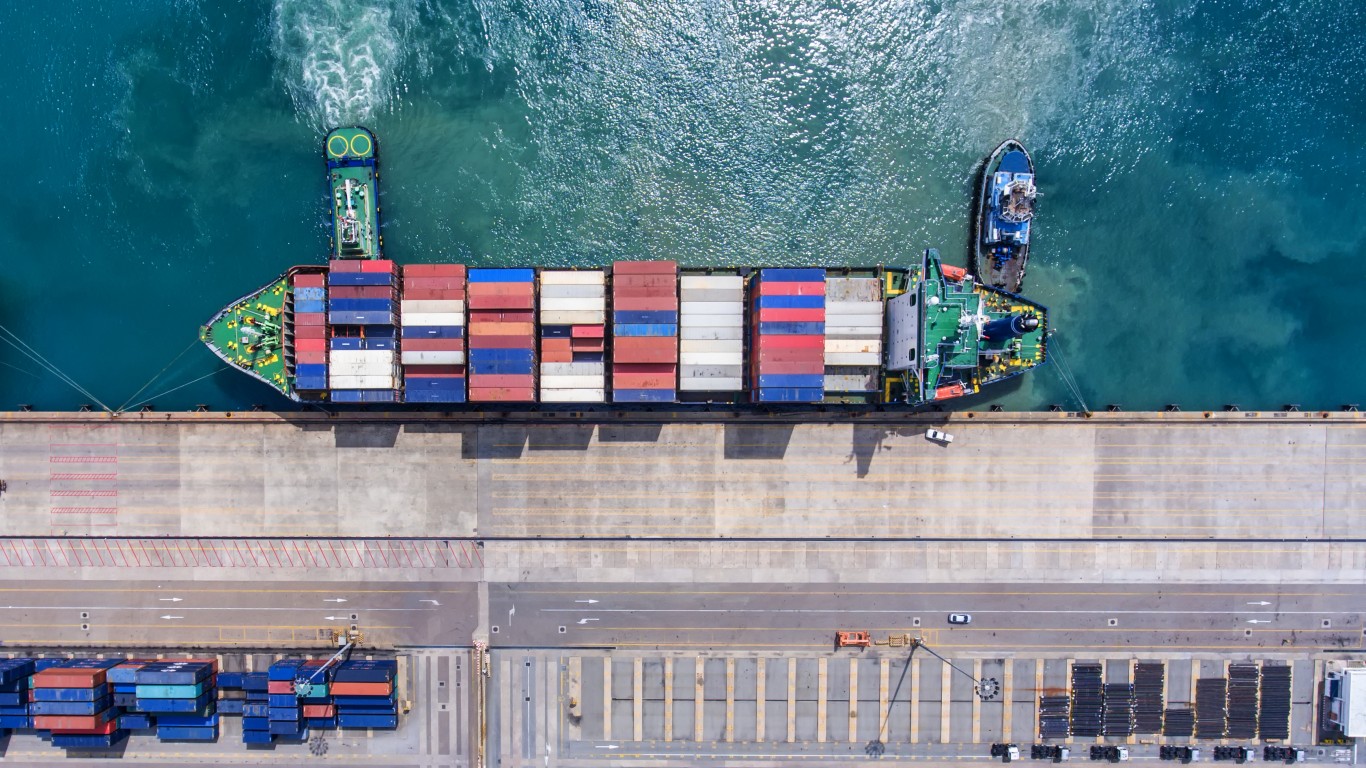Economy
Fitch Quantifies GDP Growth Damage for 2020 If More Tariffs Come

Published:
Last Updated:

It is not at all unusual for economists and market watchers to worry about trade tensions escalating. Where things break apart between the glass viewed as half-empty or half-full is if the trade tensions turn into an outright prolonged trade war. Tensions imply that things are temporary, but a trade war means both sides will play to win at almost any cost.
Fitch Ratings has issued a fresh report signaling that the “trade war” (not “tension”) is weighing on investment prospects and that the trade war has sharply increased downside risks to world economic growth forecasts.
Fitch’s new Global Economic Outlook has a base case assumption that further U.S. tariffs on China are avoided. That said, Fitch is lowering its global growth forecast for 2020 as an increased uncertainty about trade has already made firms more cautious on their capital spending.
On top of weaker business investment prospects, the world economic forecast has to factor in weaker consumer spending growth in China and lower growth prospects for other emerging markets. This report still takes into account better-than-expected gross domestic product (GDP) performance in the United States, the eurozone and China in the first quarter of 2019. It also factors in robust labor conditions supporting consumer spending in the advanced economies.
Sadly, a more accommodating global monetary case only offers a partial offset to the weakness. Fitch noted that after four rate hikes in 2018, its view is that the U.S. Federal Reserve will leave interest rates on hold in 2019 — and that the European Central Bank looks increasingly likely to restart net asset purchases this year. Brian Coulton, Fitch’s chief economist, said:
Even though our base case assumes that further U.S. tariffs on China are avoided, our world growth forecast for 2020 has been lowered. Increased uncertainty about trade is already making firms more cautious on capex… Central bank responses will not fully compensate for the impact of rising trade uncertainties on investment spending and the adverse supply-side impact of tariff hikes and trade restrictions.
Fitch’s June update to its Global Economic Outlook has seen slower business investment in the United States at the same time that China has relaxed its manufacturing investment since its last view was issued. And while the eurozone seems likely to avoid recession, the outlook for eurozone growth remains weak amid this slump in global manufacturing and trade. Emerging markets’ prospects are also being hurt on trade concerns.
As far as what to look for in 2018 and 2019, Fitch’s new Global Economic Outlook said:
World growth is expected to fall to 2.8% this year from 3.2% in 2018. This forecast is unchanged from the March 2019 Global Economic Outlook. Modest upgrades to 2019 forecasts for the US, the eurozone, the U.K. and China after positive surprises in the first quarter of 2019 have been offset by forecast cuts for Brazil, Mexico, Russia, Korea, South Africa, Canada and Australia. World growth in 2020 has been revised down to 2.7% from 2.8% in the last Global Economic Outlook with cuts to both China (to 6.0% from 6.1%) and the U.S. (to 1.8% from 1.9%) and, most significantly, Brazil (to 2.2% from 2.7%).
What Fitch noted about its baseline assumption is that the recently threatened tariffs by the United States on the remaining $300 billion of imports from China are avoided. Needless to say, this assumption is not a universally accepted outcome by economists, politicians and investors at the current time. Fitch warns of the additional impact if more tariffs come:
In the event that these tariffs were to be implemented soon at a rate of 25% — and China retaliates — our scenario analysis suggests that world GDP could be reduced by 0.4 percentage points (relative to the baseline forecast) by 2020. China and U.S. GDP would be 0.8 percentage points and 0.5 percentage points lower than in the baseline forecast, respectively.
24/7 Wall St. used the data offered by Fitch and looked at it on a historical basis and going forward. If Fitch is correct on its negative impact from additional tariffs on the 2020 economy, the economies may not technically be in recession but may feel like it. Its view on additional tariffs would put 2020 growth down at 2.3% for the world, and the growth in 2020 would go down to 5.2% in China and 1.3% for the U.S.
While those geared-down 2020 growth figures are not a recession by definition, getting close to 5% growth in China is not enough for the country to sustain its own ambitious plans. And seeing just 1.3% GDP growth in the United States would mark the slowest post-recession GDP growth measured by the St. Louis Fed’s FRED data on Real Gross Domestic Product in any given post-recession year in the United States. The FRED data showed just 1.55% growth in 2011 and 1.57% in 2016.
Having the weakest post-recession growth may not get defined as a recession, but it may feel like a garden-variety recession.
If you’re one of the over 4 Million Americans set to retire this year, you may want to pay attention.
Finding a financial advisor who puts your interest first can be the difference between a rich retirement and barely getting by, and today it’s easier than ever. SmartAsset’s free tool matches you with up to three fiduciary financial advisors that serve your area in minutes. Each advisor has been carefully vetted, and must act in your best interests. Start your search now.
Don’t waste another minute; get started right here and help your retirement dreams become a retirement reality.
Thank you for reading! Have some feedback for us?
Contact the 24/7 Wall St. editorial team.